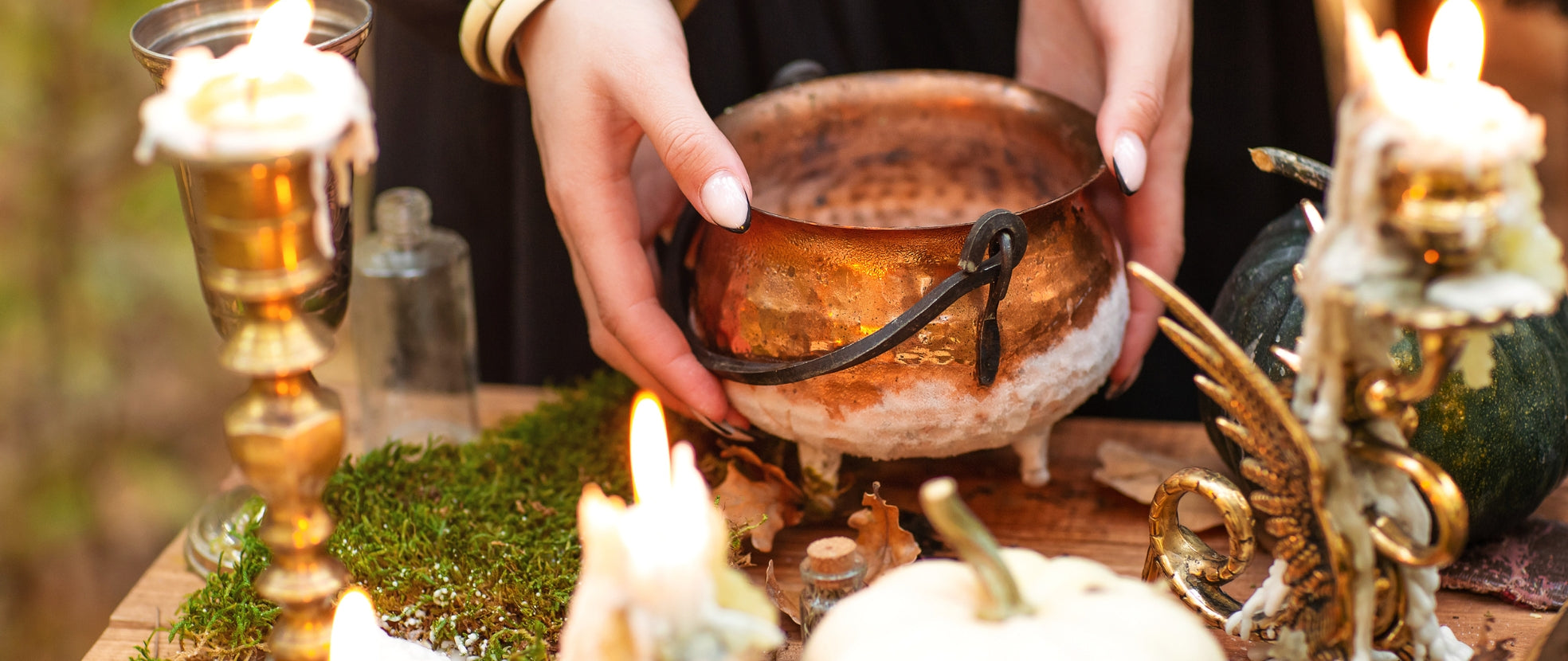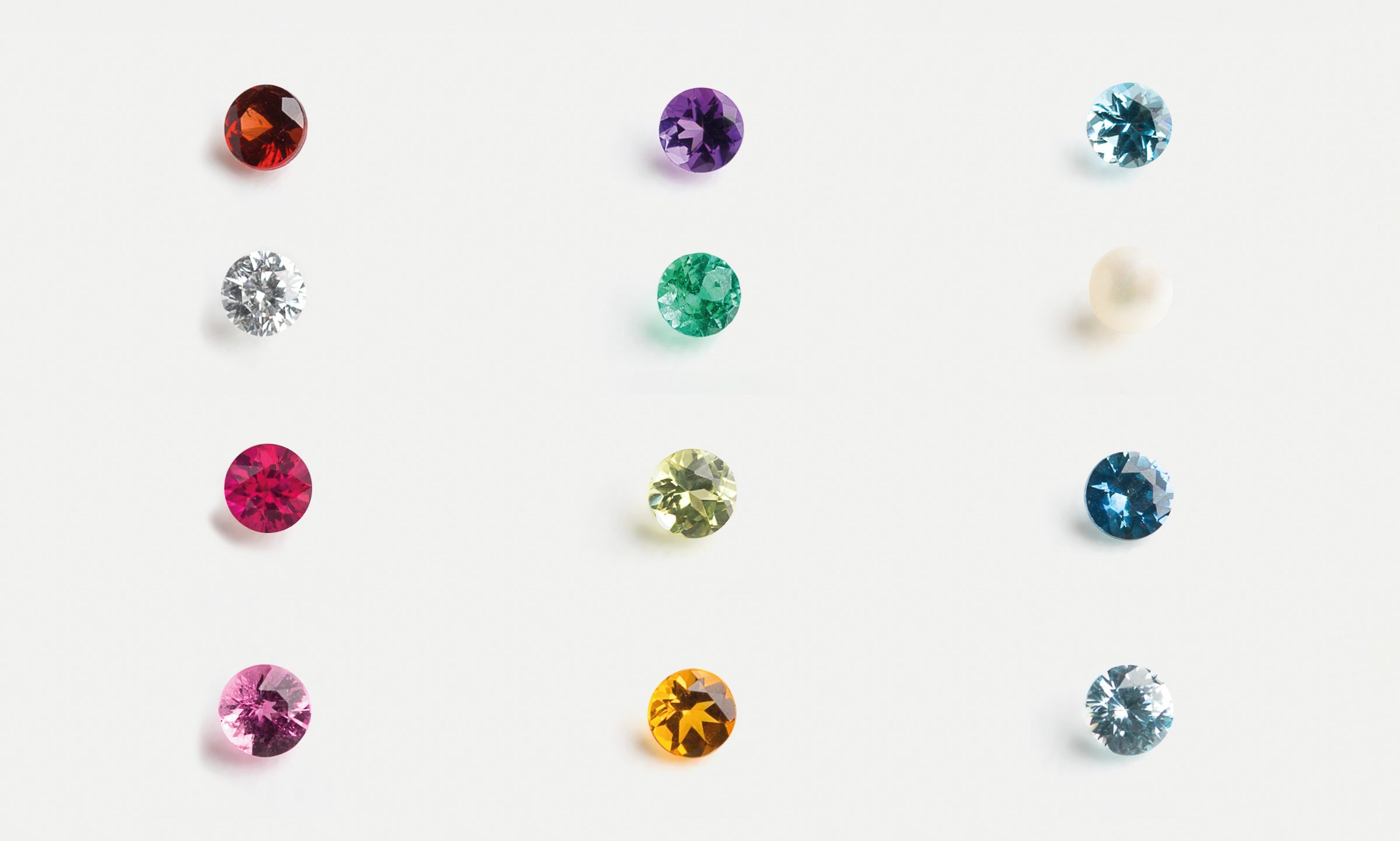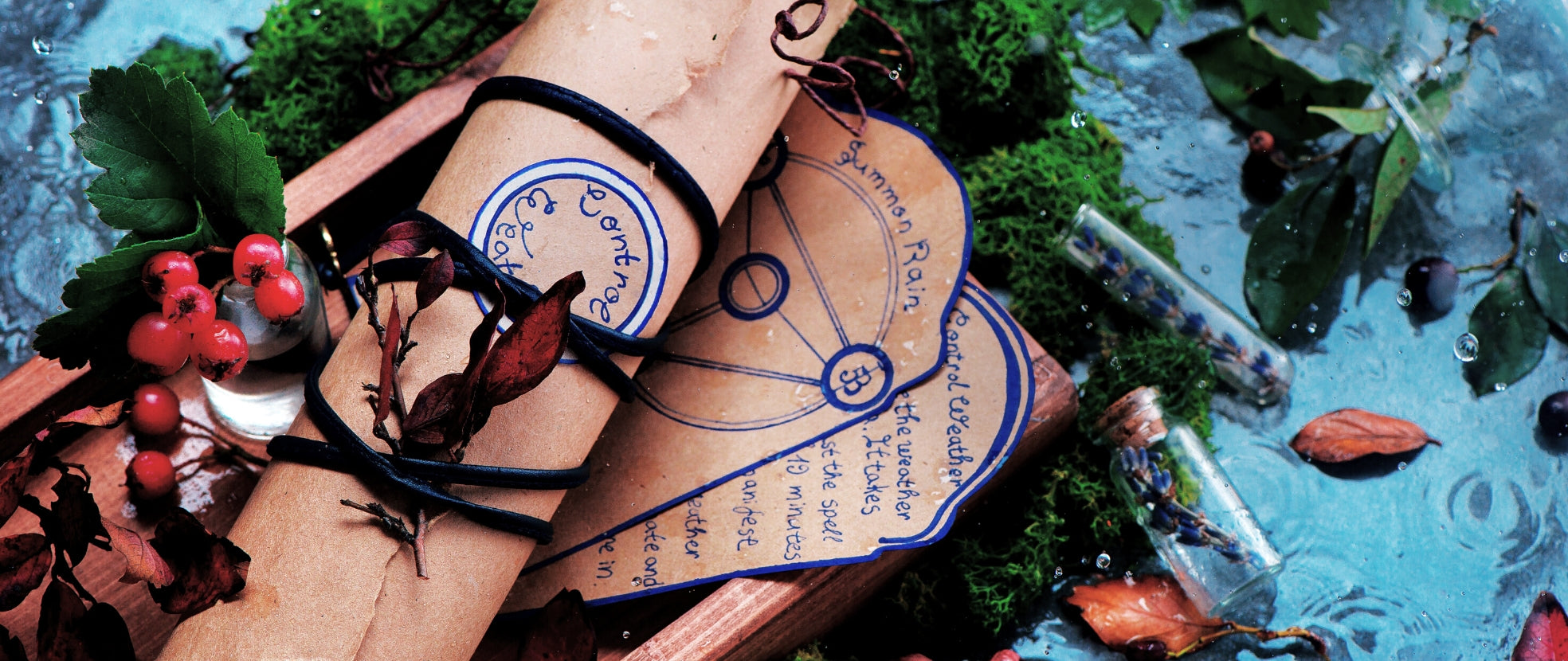Black opal is a collective term for opals with a dark body colour ranging from dark gray, dark blue, dark green, to jet black. The most sought-after variety of opal, black opals are mainly mined in Lightning Ridge, New South Wales (dubbed as the ˜Black Opal Capital of the World').
The Physical Properties of Black Opal
What gives this sedimentary stone its signature dark body tone? It contains carbon and iron oxide which are not present in common opals. Due to its dark base colour, the fire (or play of rainbow colours) in a black opal appears more vibrant than that of its light-coloured counterparts.
This vivid display of colours makes black opal stand out from other opals. Most black opal specimens have a layer of ˜potch' or colourless opal on their backs, making their dark shade even darker and causing their fire to be more pronounced. The darker the natural potch, the darker the body tone and the brighter the play of colours appear.
The price and value of a black opal increases with the intensity of its body tone colour and the vibrancy of its fire. Specimens showing a strong fire-to-body colour contrast are generally more expensive.
Opal’s vibrant play of colours (called ‘fire’) are caused by the stone’s silica spheres.
The colours flashed in an opal's fire are produced by tiny, light-dispersing silica spheres that make up the stone. These spheres have a uniform size, shape, and structure. A black opal displays blue and violet colours if it has spheres smaller than 1,500 angstroms (Ã…), red and orange if it contains spheres no larger than 3,500 Ã….
Did you know that opal's colours don't just occur as random splashes all over its body? They have distinguishable patterns that add to their value and rarity. These can range from good to excellent, with the latter fetching a higher price.
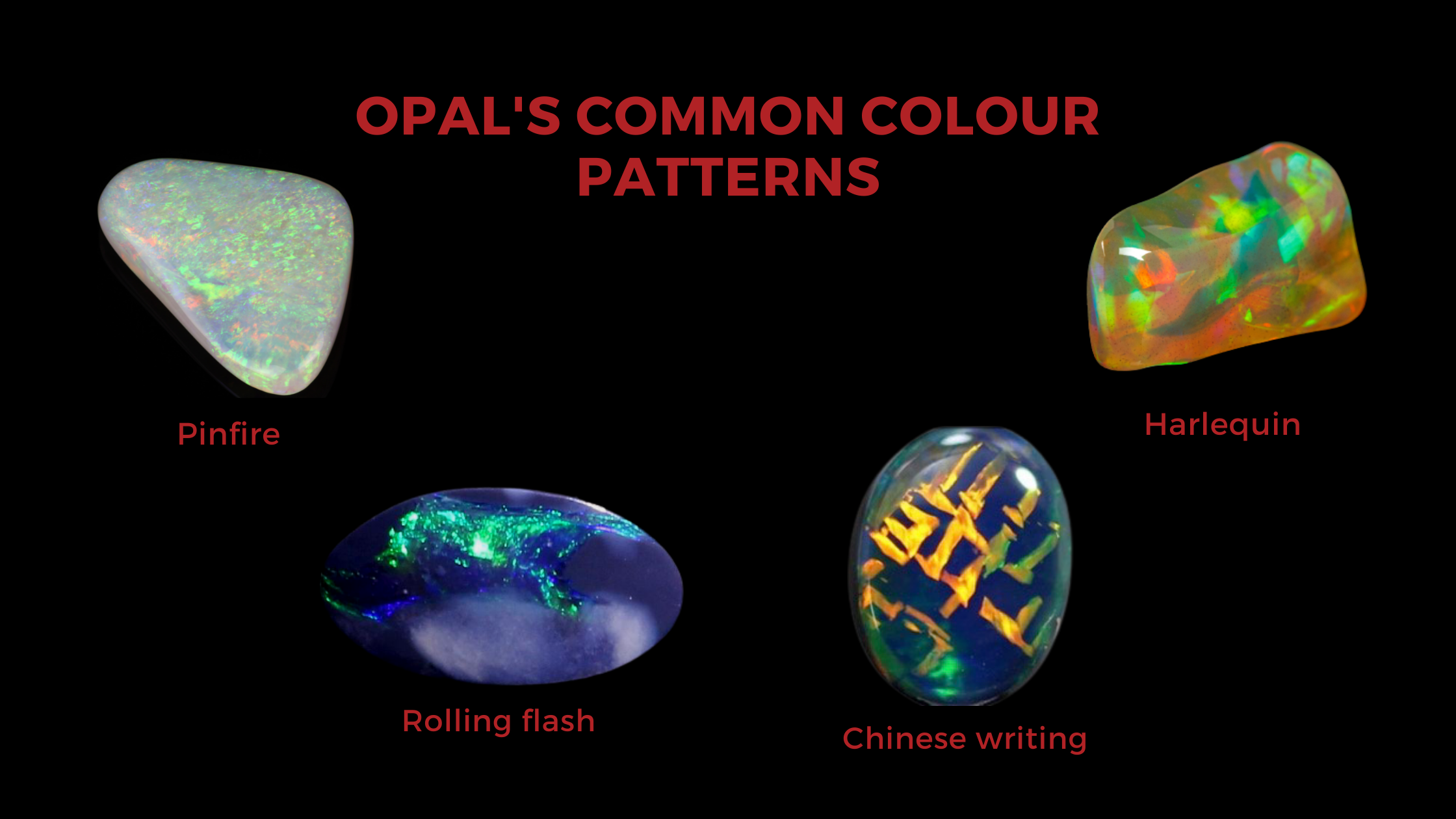
Good patterns are classified as:
- Pinfire - Tiny pinpoints of colours throughout the opal
- Rolling flash - Large bands of colours suspended across the stone
Excellent colour pattern examples:
- Chinese writing - Presence of bright and bold lines of colour that look like Chinese calligraphy
- Harlequin - Recurring colour patterns of squares and diamonds
They are often cut into an oval shape. But to maximize their size and carat weight, Black opals are cut en cabochon or in teardrop shapes.
The History of Black Opal
Origins
The name opal comes from the word upala which is Sanskrit for ˜precious stone,' and opalus, which is Latin for ˜to see a colour change.'
The occurrence of opal in Australia traces back millions of years ago when some regions in Australia were submerged in vast inland sea.
As time passed, waters from the ground surface deposited silica minerals into cavities and sedimentary rocks. The waters evaporated, but the silica deposits remained in the rocks.
Years later, the silica created microscopic silica spheres that hardened over time and transformed into opals. Some silica mixtures replaced organic materials such as plants, sea shells, wood, and bone deposits, resulting in what we call ˜opalized fossils.' Opals contain varying amounts of water (about 3 to 10%), with a Mohs hardness rating of 5.5 to 6.5.
Rise to Popularity
In the late 1800s, Australia rose to become the top producer of opals in the world. Ninety percent of the world's opal comes from the Land Down Under. Other leading producers of the stone include Brazil, Ethiopia, Canada, Guatemala, Indonesia, Mexico, New Zealand, Peru, and the USA.
The heyday of opals was marked during the Art Nouveau movements in the early 20th century, the period wherein opals saturated the market. Today, opal production has declined since the stone is becoming more difficult to find.
The quest for new opal deposits is ongoing, although it's taking more time due to a lack of technology and systems for discovering opals in the Australian outback.
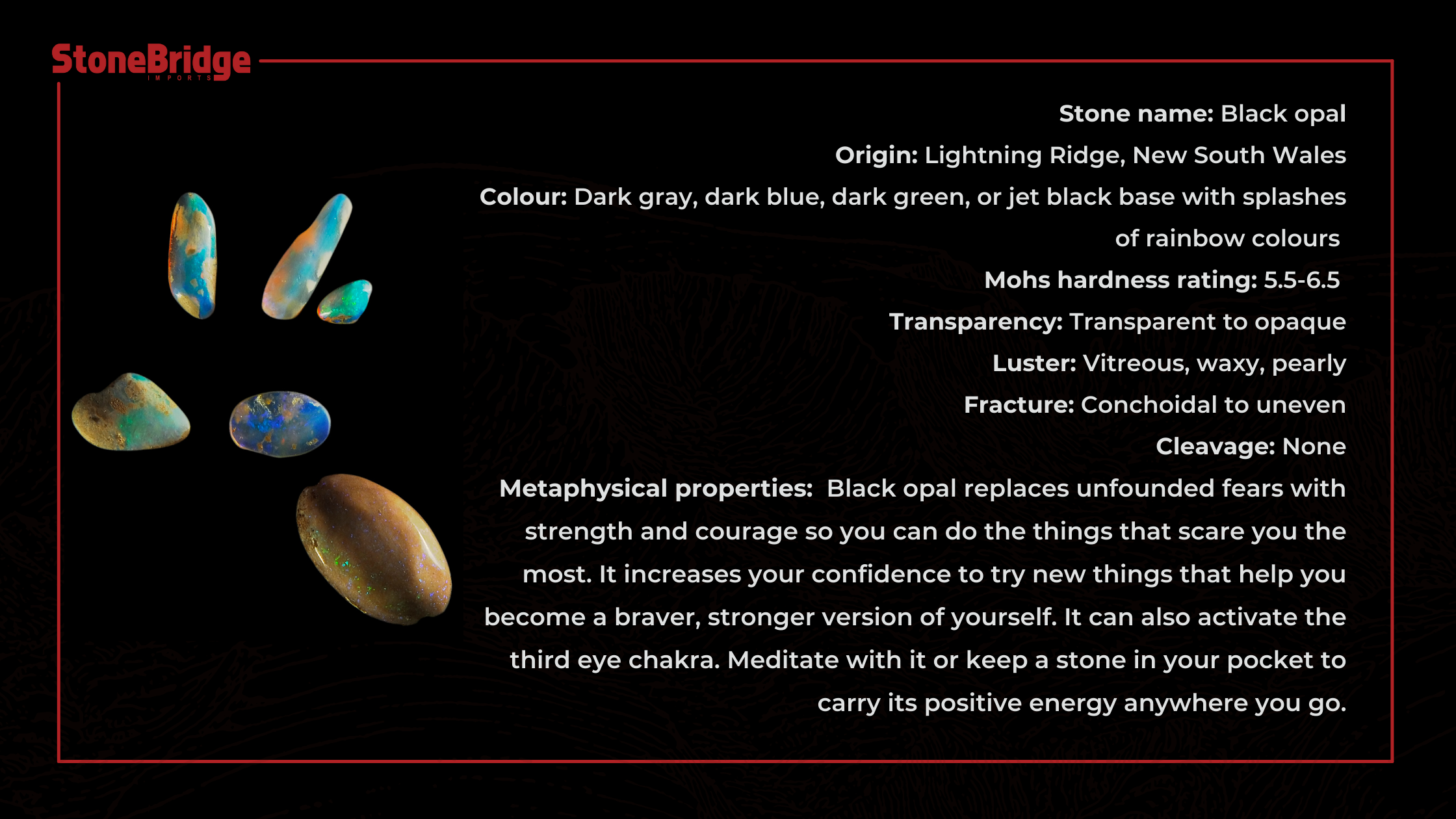
The Lore of Black Opal
According to aboriginal mythology, the Creator came down to Earth riding a rainbow to spread the message of peace to humans. When his foot touched the earth, the stones sparkled and were tainted with rainbow colours. And this was how opals came to be.
Opals are also embedded in the fabric of European lore and history. In the Middle Ages, the opal was called the ˜eye stone' as people believed it could promote good eyesight.
In other cultures, opal was thought to make the wearer invisible. Some blonde women also wore opal necklaces to protect their hair from discolouration.
However, the stone began to have a lackluster reputation in the late 18th and 19th centuries. Opal was labeled ˜a bringer of bad luck' and became associated with famine, pestilence, and the fall of monarchs.
But Queen Victoria overturned opal's notoriety when she showed Europe her love of the stone: she kept a personal collection of opals and wore them throughout her reign. Even the queen's daughters were presented with fine opals.
The Royal Court of Britain was eventually renowned for being a model for fashion around the world. This created an influx of demand for opals. While all this was happening, fine-quality opals had been discovered in Australia.
The Metaphysical Properties of Black Opal
In addition to its beauty, black opal is also known for a number of metaphysical benefits.
Are doubts and fear holding you back from seizing new experiences? Black opal might be the stone you need to set those feelings aside. Black opal replaces unfounded fears with strength and courage so you can do the things that scare you the most: learning how to swim, riding a roller coaster, cliff diving, etc.
Black opal increases your confidence to try new things that help you become a braver, stronger version of yourself. It can also activate the third eye chakra. It is said that the fire or play of colours of black opals provides higher wisdom and boosts intuition.
Use black opal during meditation. Place it in front of you, then close your eyes and take deep breaths. Cast the thoughts and emotions that are weighing you down into your stone. Release those energies into the stone until your mind and heart have been cleared.
Carry the stone with you wherever you go to deflect negativity and to maintain a positive energy.
Sources:
Sedawie, W. (n.d.) Australian Opal: The Lightning From Down Under. Opal Auctions.
International Gem Society. (n.d.). Opal Stones and Gems: Value, Price, and Jewelry Information. Gemsociety.org. Accessed at https://www.gemsociety.org/article/opal-jewelry-and-gemstone-information/
International Gem Society. (n.d.). What is Gemstone Dispersion? Gemsociety.org. Accessed at https://www.gemsociety.org/article/gemstone-dispersion/
Black Opals. (n.d.). Opals Down Under. Accessed at https://www.opalsdownunder.com.au/learn/black-opals/
Black Opal: Also Known as Dark Opal. (n.d.). Geology.com. Accessed at https://geology.com/gemstones/opal/black-opal.shtml
The History of Opals. (n.d.). Opals Down Under. Accessed at https://www.opalsdownunder.com.au/learn/the-history-of-opal/
Black Opal. (n.d.). The Crystal Council. Accessed at https://thecrystalcouncil.com/crystals/black-opal
Art Nouveau. (n.d.). New World Encyclopedia. Accessed at https://www.newworldencyclopedia.org/entry/Art_Nouveau
Kinsella, A. (2019, October 15). The History of Opals in Art and Design. AnOther. Accessed at https://www.anothermag.com/fashion-beauty/11969/the-history-of-opals-in-art-and-design-tiffany-and-co-tiffany-t



